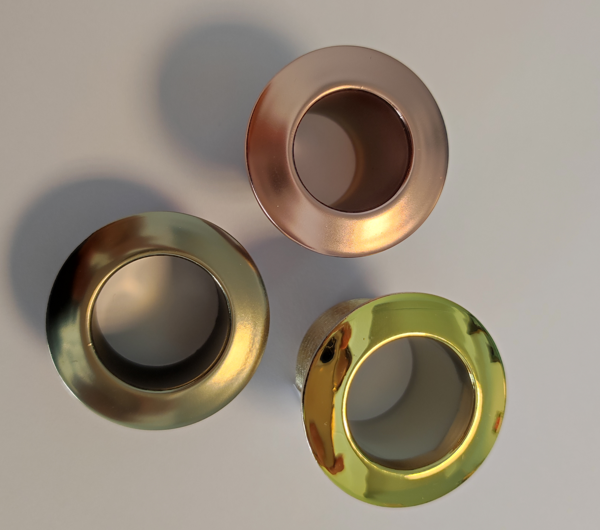
PVD metallization / Sputtering / Chrome plating
- Chrome plating
- Brass plating
- Vacuum metallization
- Method description
We offer an alternative to galvanization - we apply environmentally safe zero-valent chromium (compared to hexavalent, which is gradually withdrawn from production).
All metal deposition processes (including chromium) in the PVD metallization process do not require nickel deposition (unlike electroplating). In this way, we obtain a coating that is not carcinogenic and does not cause allergies.
The final effect is a mirror or satin coating (different degrees of matteness), in a natural chromium color (not an imitation, as is the case with ordinary vacuum metallization of alu).
Similarly to the chrome plating process - using PVD vacuum metallization (sputtering) we can cover the details with brass. Due to the properties of this metal (oxidation), such a coating must then be protected with a varnish layer, which we do on site.
The effect - a mirror or satin coating in the natural golden color of brass (not an imitation).
The same as in chrome plating - applied without harming the environment, meeting EU directives, without a galvanic bath.
PVD vacuum metallization is a more advanced type of metallization. Metallization with the use of aluminum is usually offered on the decoration market, plus additional coloring of coatings to imitate the appearance of other metals. The biggest disadvantage of this method is the lack of color repeatability (it varies depending on the thickness of the layer, a different degree of saturation) and the inability to reproduce the perfectly natural color of a given metal.
In our technology, we apply the pure form of a given metal - we can choose from chrome, brass, copper, aluminum, titanium and stainless steel. Thanks to this, the details are covered with the selected metal, giving them a natural color and repeatable, full coverage.
The PVD coating is much thinner than after galvanization, which, on the one hand, gives the advantage of not having problems with fitting the details together (no dimensional difference, no dimensional tolerances are required), and on the other hand, with high exposure to external conditions and abrasion - it is required adding a protective varnish layer. In addition, oxidizable metals (brass, copper, aluminum) must always be covered with a protective layer.
Sputtering (also known as PVD metallization or the magnetron method) consists in sputtering metal atoms and depositing them on the surface of the product under high vacuum conditions. It is a method of physical metal deposition from the gas phase (Physical Vapor Deposition - PVD).
A plate of the selected metal (cathode) and the details to be coated are placed in the vacuum chamber. Then, the chamber is brought to a state of high vacuum, the selected process gas (usually argon) is introduced, and high voltage is dosed (having no effect on the details in the chamber). Metal atoms from the plate (cathode) are knocked out and then settle and condense on the details.
The great advantage of this method is its non-invasiveness - the process is carried out at room temperature, and metal deposition can be performed on various substrates (any type of plastic, glass, metal, wood and other materials).






